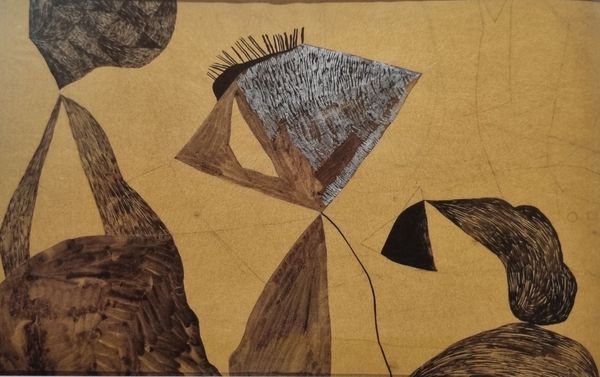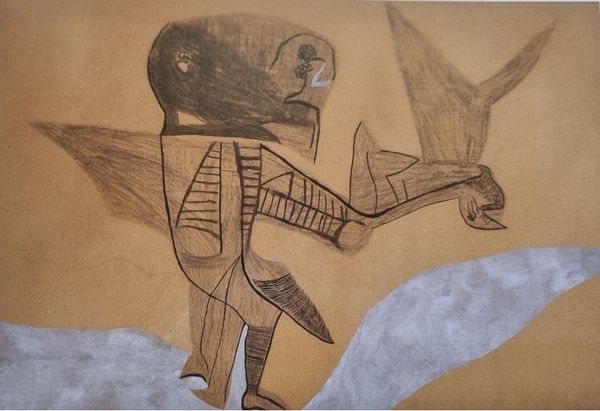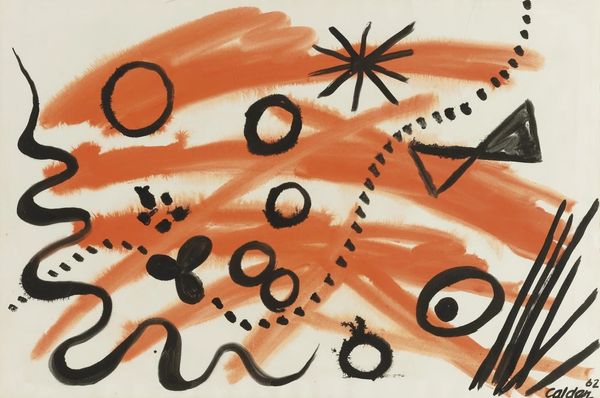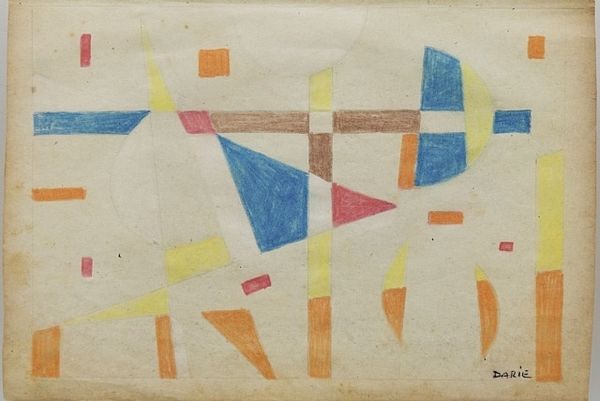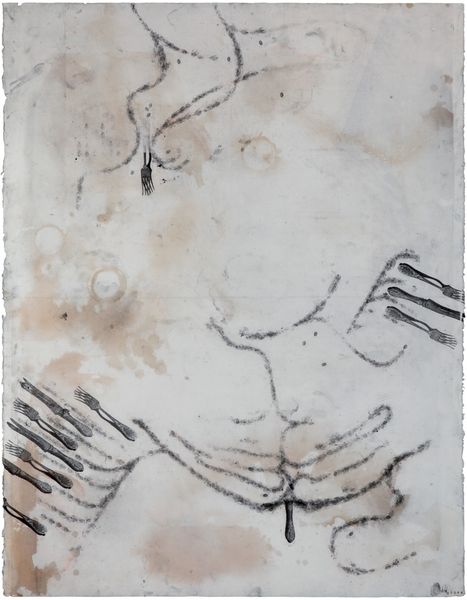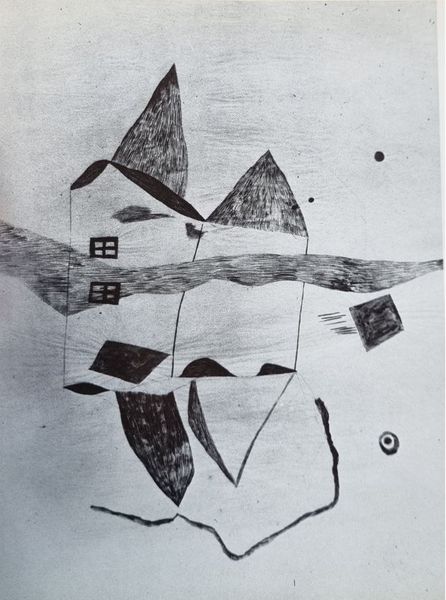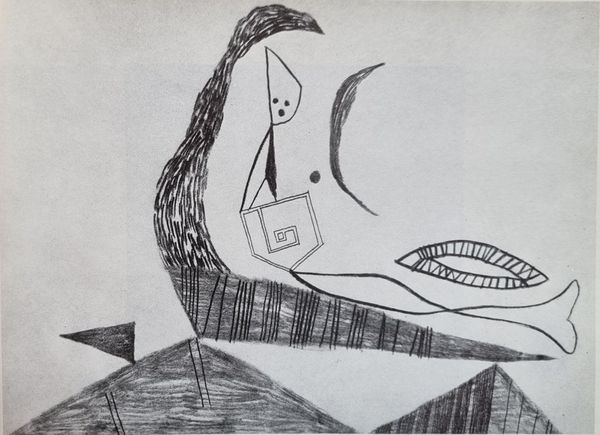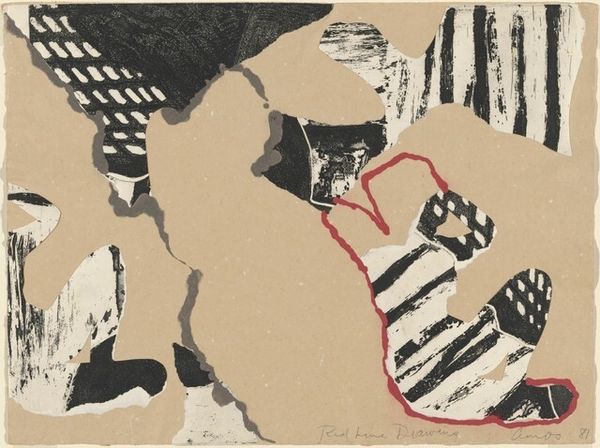
drawing, paper, ink, pencil
#
drawing
#
ink painting
#
paper
#
abstract
#
ink
#
coloured pencil
#
geometric
#
pencil
#
abstraction
Copyright: Public domain
Vajda Lajos made this drawing, Cave Grave, in 1938 with pencil and Indian ink on paper. The limited palette of black and brown, and the way the marks seem to stutter across the surface, gives it a strange, dreamlike quality. The material aspect of the work— the visible grain of the paper, the way the ink bleeds slightly—really emphasizes the physicality of the medium. It’s almost as if the materials are collaborating with the artist, adding their own voices to the conversation. The overlaid shapes on the right recall Cubist collage, but in the center a more organic and biomorphic form merges into these geometric forms. Taken as a whole, the composition suggests a kind of psychic landscape, with fragmented figures and abstract shapes floating in a space that feels both intimate and infinite. This interest in exploring the subconscious definitely puts me in mind of other surrealist artists like André Masson, who also used automatic drawing as a way to tap into the unconscious mind.
Comments
No comments
Be the first to comment and join the conversation on the ultimate creative platform.
